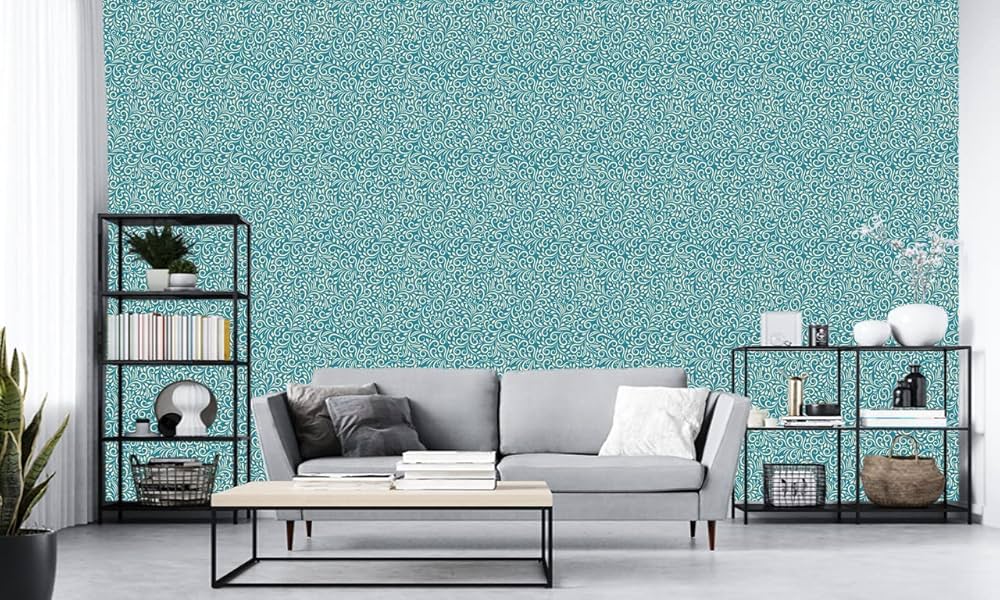When it comes to creating a cozy, inviting living room, there’s one key ingredient that’s often overlooked: texture. Texture gives a room depth and personality, transforming it from flat and uninspired to warm and welcoming. Whether it’s plush throws, raw wooden accents, or sleek metallic elements, layering different textures can make your living room feel like a design masterpiece. And the best part? Mastering the art of texture doesn’t require a designer’s touch–just a few easy-to-follow principles.
Here’s how to combine fabrics, wood, metals, and more to layer textures and craft a living room you’ll never want to leave.
-
Start with a Neutral Base
The key to layering textures is starting with a neutral foundation. Neutral tones like beige, gray, or cream act as a blank canvas, allowing other textures and accents to stand out.
Ideas for Your Neutral Base:
Sofa: Choose a neutral fabric like linen or cotton for your main seating.
Area Rug: Opt for a solid or subtly patterned rug in a soft material like wool.
By starting with a simple base, you’ll have the flexibility to layer bold textures without overwhelming the space.
Pro Tip: Neutrals don’t have to be boring! Opt for fabrics with visual interest, like a linen weave or a subtle herringbone pattern, to add an understated touch of texture.
-
Mix Soft and Hard Materials
The secret to great texture is balance. Pair soft materials like plush fabrics with harder, more structured elements like wood, metal, or stone. This contrast creates an interesting and dynamic space that feels cozy yet visually engaging.
How to Balance Soft and Hard:
Soft Elements: Incorporate velvet or knit throw pillows, faux fur blankets, or sheer curtains for a touch of comfort.
Hard Elements: Pair these with a wooden coffee table, a metal side table, or a stone fireplace to ground the room.
Pro Tip: Aim for a mix of at least three different textures (soft, hard, and somewhere in between) to achieve a well-balanced look.
-
Layer Textiles for Depth
Textiles are the easiest way to add multiple layers of texture without committing to major furniture changes. Combine throws, pillows, and rugs to create a space that feels both luxurious and inviting.
Ideas to Try:
Pillows: Mix and match throw pillows with different textures, such as a chunky knit paired with buttery-soft leather or smooth velvet.
Throws: Drape a cable-knit throw blanket over one corner of the sofa for a casual, lived-in feel.
Layered Rugs: Place a smaller patterned rug over a larger natural fiber rug (like jute or sisal) to add dimension underfoot.
Pro Tip: Stick to a consistent color palette when layering textiles to maintain a cohesive look.

-
Add Natural Materials
Natural materials like wood, rattan, and stone are fantastic for adding warmth and character to a living room. Their raw, organic textures bring an earthy vibe to your space and balance out sleek surfaces, such as glass or polished metals.
How to Incorporate Natural Textures:
Add a wooden coffee table or console for an organic focal point.
Use a woven rattan basket for storing blankets or books.
Opt for decor with stone elements, like a marble tray or coasters.
Pro Tip: Choose pieces with imperfections that highlight their natural beauty, like knots in wood or slight color variations in stone.
-
Layer with Metallic Accents
A hint of metallic shine can add glamour and contrast to your textured living room. Mixed metals like gold, brass, or black iron are especially great for adding visual interest without feeling overwhelming.
How to Add Metals:
Use brass or matte black light fixtures, like a chandelier or floor lamp.
Add metallic decor, such as a gold vase, a chrome-framed mirror, or metal-edged picture frames.
Layer with a metallic-rimmed tray to create a centerpiece for your coffee table.
Pro Tip: Avoid using too much metal in one finish; mix and match for a more balanced and layered look.
-
Don’t Forget Plants
Plants are the missing link that bridges all your textures together. Their lush, organic texture brightens the space while adding a pop of color.
Suggestions:
Use leafy green plants like a fiddle leaf fig or monstera for larger spaces.
Add smaller succulents or trailing plants like pothos to shelves or side tables.
Pro Tip: Incorporate planters in contrasting materials, like ceramic, woven wicker, or metal, to double down on texture.
Final Thoughts
Layering textures is an art, but with the right balance, it can completely transform your living room into the cozy, inviting retreat of your dreams. By combining neutral foundations, soft and hard materials, natural elements, and metallics, you can craft a space brimming with personality and charm.
Start with a single layer, like adding textured pillows or a woven basket, and build from there until your room feels just right. Not only will your living room look stunning, but it’ll also be the coziest spot in your home.




